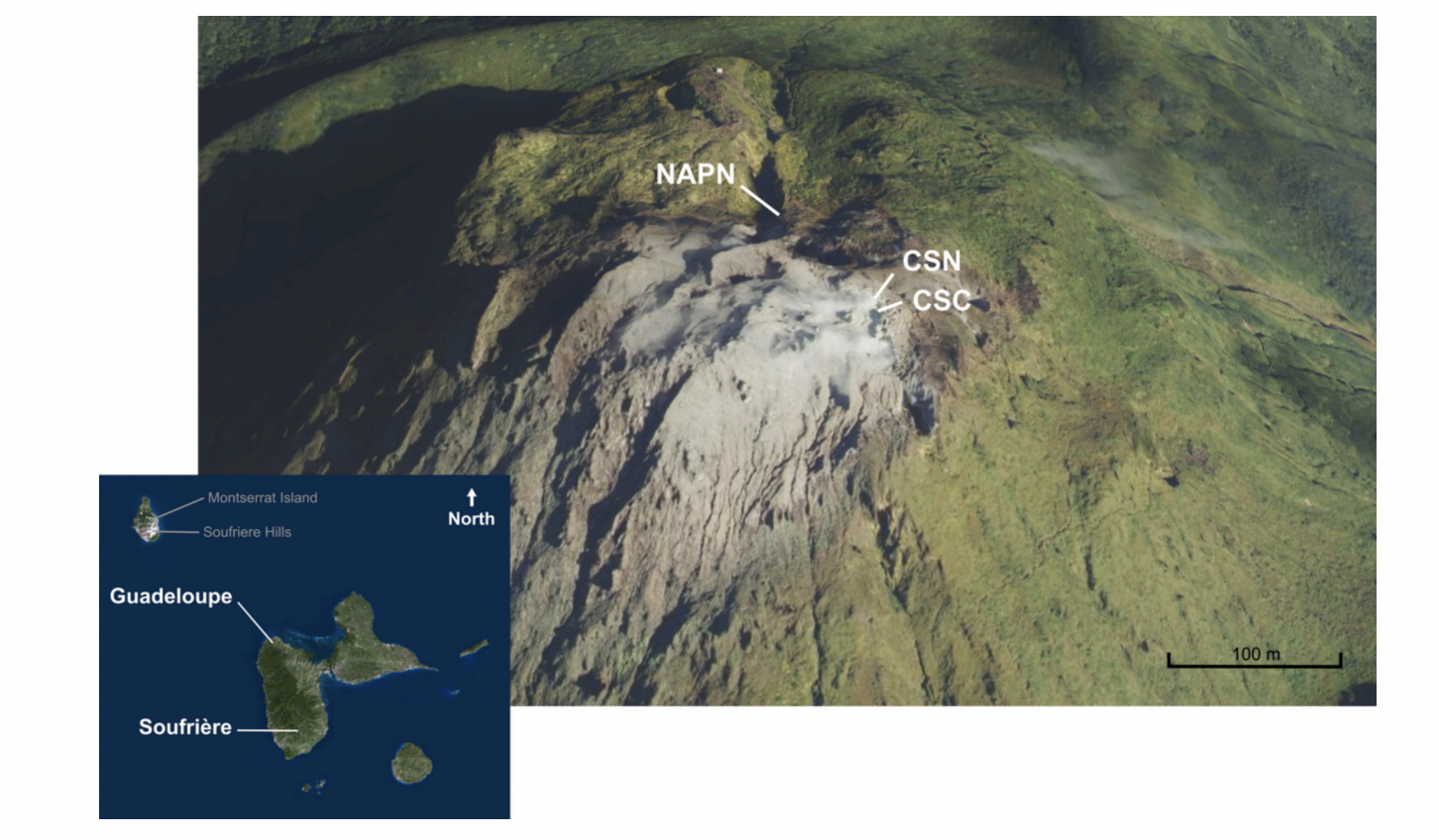Autor Ckelar: Manuel Inostroza.
Otros autores: Étienne Le Glas, Magali Bonifacie, Roberto Moretti, Vincent Robert, Pierre Agrinier, Jabrane Labidi, Gérard Bardoux, Laëtitia Pantobe, Arnaud Burtin, Élodie Chillin-Eusebe y Tristan Didier.
Revista científica: Journal of Volcanology and Geothermal Research
ABSTRACT
Closed-conduit volcanoes develop hydrothermal aquifers where infiltrating waters dissolve magmatic gases such as SO₂, HCl, and HF. The extent of this “scrubbing effect” is traditionally tracked using CO₂/SO₂ or CO₂/STotal, but these ratios can also be modified by secondary processes. Given the high solubility of gaseous HCl(g) into aqueous water, we assess here chlorine isotopic compositions (δ37Cl) in fumarolic HCl(g) as a potential quantitative index of scrubbing.
We present three years and a half (January 2018 to May 2021) of δ37Cl and chlorine concentrations [Cl] data from fumarolic gases at La Soufrière de Guadeloupe, alongside traditional geochemical tracers in volcanology. Our data show strong negative correlation between δ37Cl and [Cl] values, suggesting variable extents of HCl dissolution into the hydrothermal aquifer through time. High δ37Cl values associated to low [Cl] indicate intense 35Cl loss into the aquifer, while low δ37Cl values with high [Cl] likely reflect more pristine magmatic signatures with minimal extents of scrubbing.
The observed δ37Cl–[Cl] trends suggest Cl isotopic fractionation factors between gas and liquid Δg-l varying between +2.5 and +5 ‰. These values are higher than expected at equilibrium, suggesting kinetic fractionations likely resulting from rapid gas flow (preventing isotopic equilibration with liquid water). The fact that comparable δ37Cl–[Cl] trends are found at Poás (Costa Rica) and Vulcano (Italy) suggests that such kinetic fractionations during HCl scrubbing may be widespread.
Comparisons between δ37Cl and CO₂/CH₄ ratios and the modeled groundwater level within the dome suggest that variations in scrubbing at La Soufrière are primarily driven by varying magmatic inputs. The progressive decrease in δ37Cl, associated with increasing [Cl] from 2019 to 2021, likely reflects long-term aquifer drying, predating the observed rise in fumarolic temperatures above 150 °C in mid-2023.
Full paper here

